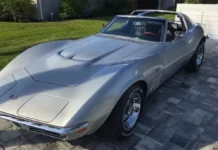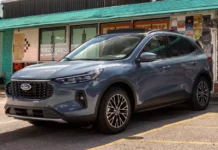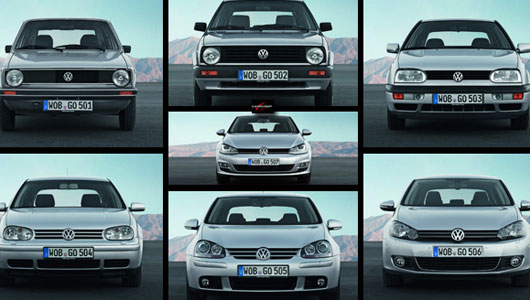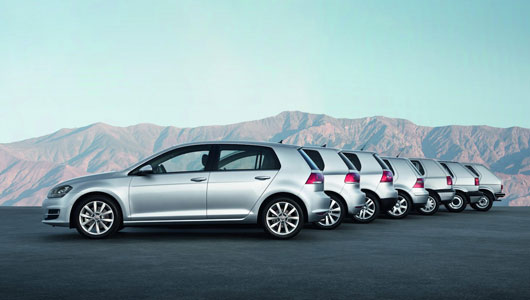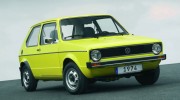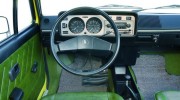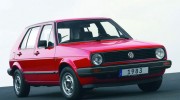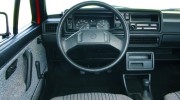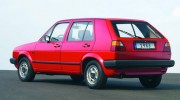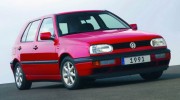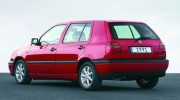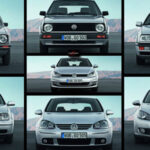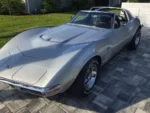When it comes to functionality, no car can compare to the Volkswagen Golf except for the Porsche 911, which has been a benchmark for the past four decades.
Although it may seem odd to compare the Golf to the “elegant beetle” that is the Porsche 911, both car brands are now under the umbrella of the VW Group, with a long history associated with the Porsche name. The VW Golf has definitely inherited some of the Porsche DNA.
It’s incredible how different two cars can be when one is a 2+2 sports car with rear-wheel drive or all-wheel drive, and a powerful flat-six engine located at the rear. On the other hand, the Golf is a compact hatchback designed for the masses, equipped with front-wheel drive or all-wheel drive.
Despite their differences, both models have followed a similar path of cautious improvement rather than revolution throughout each generation. This has allowed them to define their respective market segments and become the default choices for customers.
While VW has never officially numbered each generation of the Golf, the public and journalists started to conventionally assign designations for the different models, such as Mk1, Mk2, and so on. As of July 2021, VW has sold a staggering 29.13 million units of the Golf worldwide, prompting the brand to adopt an “official” numbering system starting with the seventh generation.
Here is a summary of the Golf’s history over the past four decades:
Golf Mk1 (A1/Typ 17, 1974-1983)
This was the long-awaited replacement for the iconic VW Beetle, which had been in production since World War II. VW drew on the expertise of Auto Union carmakers and the design talent of Giorgio Giugiaro to create a completely new style for the Golf.
The result was a simple and compact design that provided a comfortable driving experience. The Golf was known as the Golf in most markets, but it was called the Rabbit in the US and the Caribbean, as well as in Mexico.
The Golf Mk1 was an instant success, with over one million units sold by October 1976. In the same year, VW introduced the first-generation GTI, a 108HP (110PS) 1.6-liter powerhouse that left a lasting impression on car enthusiasts.
The Golf Mk1 and its variants, such as the Jetta and Cabriolet, achieved impressive sales records, with a total of 6.72 million units sold worldwide.
Golf Mk2 (A2/Typ 19E, 1983-1991)
Following the success of the Mk1, VW faced the challenge of designing an even better replacement. The Mk2 Golf built on the original design but featured significantly larger dimensions.
Compared to its predecessor, the Mk2 Golf was longer, wider, and had an extended wheelbase. It introduced many new features for a compact car, such as a catalytic converter, ABS, power steering, and four-wheel drive.
This model also surpassed the 10 million unit sales milestone, with the Mk2 contributing to 6.41 million units.
The Golf Mk2 became a global success, with sales reaching 6.41 million units.
Golf Mk3 (A3/Typ 1H, 1991-1997)
VW introduced the third-generation Golf in August 1991. The Mk3 Golf featured a rounder body and slightly increased dimensions, surpassing 4 meters in length.
The GTI version of the Mk3 Golf was powered by a 2.0-liter engine, with different power outputs for the different models. The Mk3 Golf introduced new improvements, such as side airbags, direct fuel injection engines, ABS, and power steering.
During its production lifespan, the Mk3 Golf and its variants, such as the Cabriolet, achieved impressive sales of up to 4.96 million units.
Golf Mk4 (A4/Typ 1J, 1997-2003)
The fourth-generation Golf aimed to address some of the criticisms of the third-generation model. Designed by Harum Warkuss, the Mk4 featured larger dimensions and improved interior quality.
The Mk4 Golf introduced many new features, including an all-galvanized body, satellite navigation, xenon headlights, and the Haldex 4-wheel drive system. It also pioneered electronic stability control, roof airbags, direct injection engines, and the first dual-clutch transmission (DSG).
Despite its short production period of four years, the Mk4 Golf sold a remarkable 4.92 million units.
Golf Mk5 (A5/Typ 1K, 2003-2009)
The fifth-generation Golf focused on improving the handling characteristics of the car, which had previously been criticized. VW introduced a new platform and a multi-link suspension system.
The Mk5 Golf featured a range of engines, including the turbocharged direct-injection 2.0-liter TSI engine and the world’s first mass-produced twincharged engine. It also introduced new features such as XDS electronic differential lock, automatic parking assist, and a touch screen infotainment system.
The Golf Plus, a compact MPV based on the Mk5, sold more than 3.27 million units.
Golf Mk6 (A6/Typ 5K, 2008-2012)
The sixth-generation Golf was redesigned by talented designer Walter da Silva and won the Car of the Year award in Europe in 2009. VW focused on improving the perceived quality and crash safety of the Mk6 Golf.
The Mk6 Golf featured a laser-welded body, an improved interior, and a wide range of safety features. It received a 5-star rating for crash testing from Euro NCAP.
The Mk6 Golf had a relatively short production period of four years.
Golf Mk7 (2012-)
The seventh-generation Golf was unveiled in Berlin in 2012 and introduced many new technological advancements. The Mk7 Golf features the new MQB platform, a range of fuel-efficient engines, and cutting-edge safety features.
Notably, the Mk7 Golf offers an active cylinder management technology that can shut down two cylinders of the engine for improved fuel efficiency. It is also lighter and more spacious compared to its predecessor.
The Mk7 Golf is equipped with new features such as XDS electronic differential lock, a multi-collision brake system, automatic parking assist, and a touch screen infotainment system.
Thuy Linh (TTTĐ)


